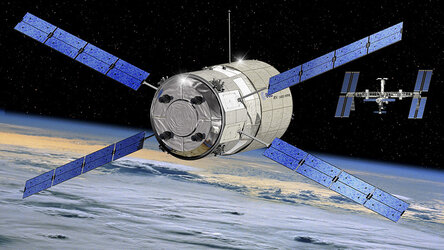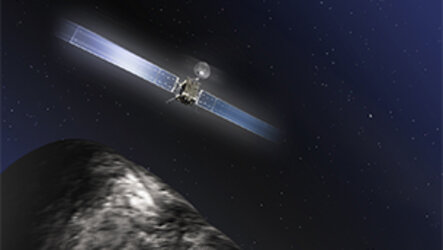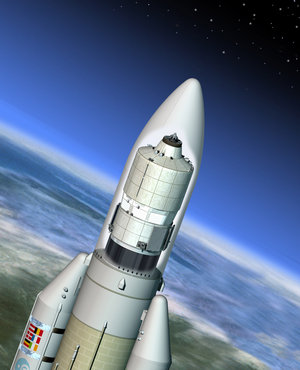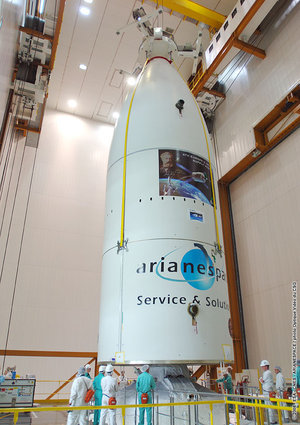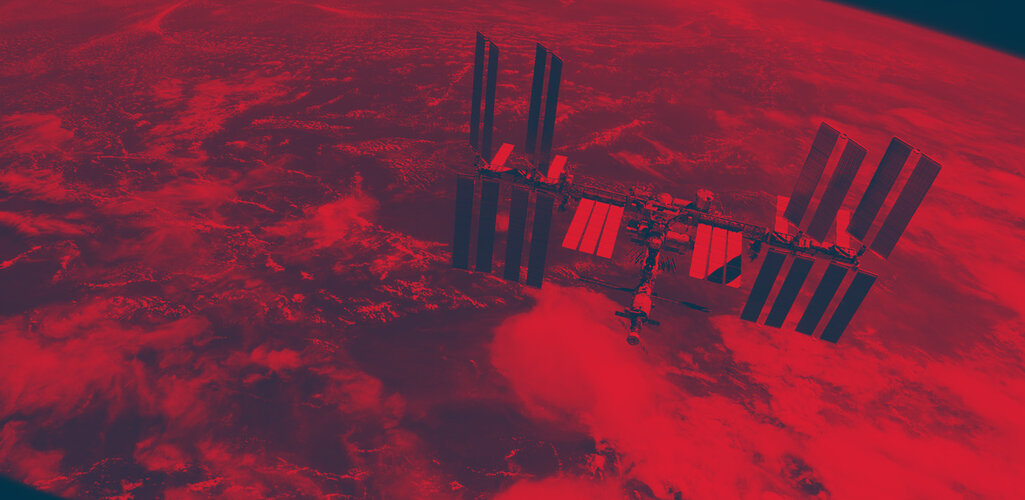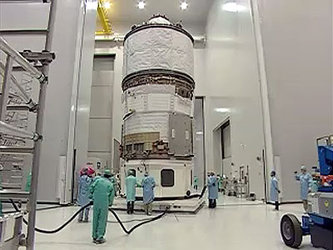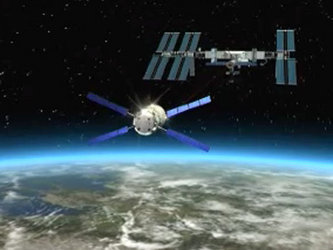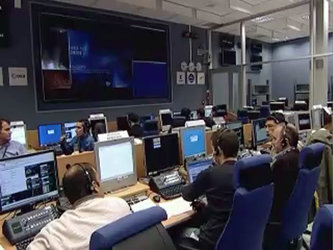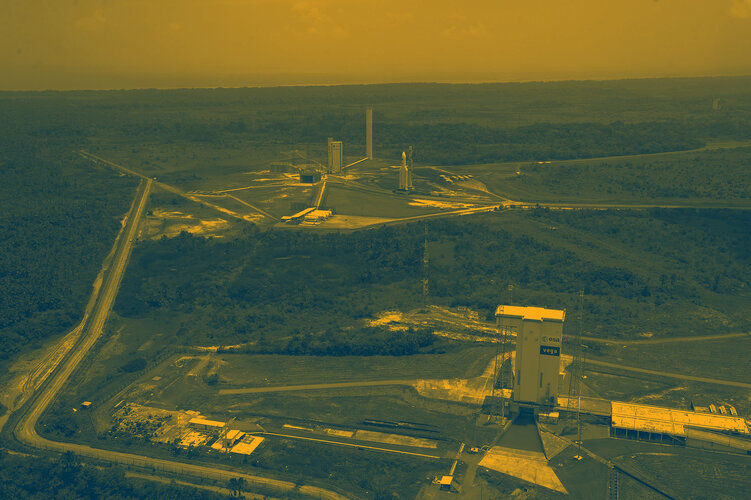Europe launches its first resupply ship to the ISS
ESA PR 15-2008. Jules Verne, the first of ESA’s Automated Transfer Vehicles (ATVs), a new series of autonomous spaceships designed to resupply and reboost the International Space Station (ISS), was successfully launched into low Earth orbit by an Ariane 5 vehicle this morning.
During the coming weeks, it will manoeuvre in order to rendezvous and eventually dock with the ISS to deliver cargo, propellant, water and oxygen to the orbital outpost.
Lift-off occurred at 05:03 CET (01:03 local) from the Guiana Space Centre, Europe’s spaceport in Kourou, French Guiana. This flight required a new version of Europe’s workhorse launcher, the Ariane 5ES, specially adapted to the task of lofting the nearly 20-tonne vehicle – more than twice as heavy as the previous largest Ariane 5 payload – to a low circular orbit inclined at 51.6 degrees relative to the Equator and equipped with an upper stage with re-ignition capabilities.
The unusual launch trajectory required the deployment of two new telemetry tracking stations, one on a ship in the Atlantic Ocean and one on the Azores Islands. The Ariane 5 upper stage performed an initial 8-minute burn over the Atlantic and entered a 45-minute coast phase, flying over Europe and Asia before reigniting for a 40-second circularisation burn over Australia. Separation of Jules Verne ATV occurred at 06:09 CET (02:09 local) and was monitored by a ground station located in New Zealand.
The most complex European spacecraft ever

Jules Verne ATV is now circling the Earth in the same orbital plane as the ISS but at an altitude of only 260 km, compared to 345 km for the Station. The vehicle is under constant monitoring by the dedicated ATV Control Centre in Toulouse, France.
Located within the premises of the French Space Agency CNES, the ATV Control Centre will ensure flight control throughout the mission in coordination with the ISS mission control centres in Moscow and Houston. After having demonstrated safety manoeuvres in free flight, the ATV will perform orbital ‘phasing’ manoeuvres in order to rendezvous with the ISS for a first docking slot scheduled for 3 April after the departure of NASA’s Space Shuttle Endeavour.
Named after the famous French 19th century visionary and author, the Jules Verne ATV is the largest and most sophisticated spacecraft ever developed in Europe, combining the functions of an autonomous free-flying platform, a manoeuvrable space vehicle and a space station module. About 10 m high with a diameter of 4.5 m, it weighed 19,357 kg at launch. It incorporates a 45-m3 pressurised module, derived from the Columbus pressure shell, and a Russian-built docking system, similar to those used on Soyuz manned ferries and on the Progress re-supply ship. About three times larger than its Russian counterpart, it can also deliver about three times more cargo.
The ATV is also the very first spacecraft in the world designed to conduct automated docking in full compliance with the very tight safety constraints imposed by human spaceflight operations. It features high accuracy navigation systems and a flight software far more complex than that used on Ariane 5.
Another ESA contribution to ISS co-ownership

Decided by ESA in 1995 in order to pay for its contribution to the operational costs of the ISS, the ATV has been under development since 1998 by an industrial team led by Astrium Space Transportation and comprising more than 30 contractors from 10 European countries.
On this first ATV mission, Jules Verne will deliver 4.6 tonnes of payload to the ISS, including 1 150 kg of dry cargo, 856 kg of propellant for the Russian Zvezda module, 270 kg of drinking water and 21 kg of oxygen. On future ATV missions, the payload capacity will be increased to 7.4 tonnes.
About half of the payload onboard Jules Verne ATV is re-boost propellant, which will be used by its own propulsion system for periodic manoeuvres to increase the altitude of the ISS in order to compensate its natural decay caused by atmospheric drag.
Upon leaving, after four months spent docked to the ISS, Jules Verne ATV will carry away waste from the Station. It will then be de-orbited over the Southern Pacific Ocean and burn up in the atmosphere in a fully controlled manner.
Only the beginning

Beyond Jules Verne, ESA has already contracted industry to produce four more ATVs to be flown through to 2015. With both ESA’s ATV and Russia’s Progress, the ISS will be able to rely on two independent servicing systems to ensure its operations after the retirement of the US space shuttle in 2010. The Japanese HTV (H-II Transfer Vehicle) will also soon join the scene. This will be vital to ensure the system's overall robustness and reliability.
“Last month, with the docking of Columbus, Europe got its own flat in the ISS building, with the launch of the first ATV, we now have our own delivery truck” said Daniel Sacotte, ESA’s Director for Human Spaceflight, Microgravity and Exploration. “We have become co-owners of the ISS, now we are about to become fully- fledged partners in running it. With the ATV we will be servicing the ISS by delivering cargo and providing orbital reboost.”

“The launch of Jules Verne by Ariane 5 ES marks an important step on the way to ESA becoming an indispensable ISS partner with the ATV, the heaviest and most complex spacecraft ever built by ESA” said Jean-Jacques Dordain, ESA’s Director General. “This is the result of close cooperation between Member States, European industry, Arianespace, CNES, ESA staff and international partners. But the next steps of Jules Verne’s mission are as important when it comes to attaining the objective of automatic rendezvous and docking with the ISS, controlled from the ATV Control Centre in Toulouse. In meeting that objective, we will have made great strides in consolidating the role of ESA in the future international exploration of the solar system.”















 Germany
Germany
 Austria
Austria
 Belgium
Belgium
 Denmark
Denmark
 Spain
Spain
 Estonia
Estonia
 Finland
Finland
 France
France
 Greece
Greece
 Hungary
Hungary
 Ireland
Ireland
 Italy
Italy
 Luxembourg
Luxembourg
 Norway
Norway
 The Netherlands
The Netherlands
 Poland
Poland
 Portugal
Portugal
 Czechia
Czechia
 Romania
Romania
 United Kingdom
United Kingdom
 Slovenia
Slovenia
 Sweden
Sweden
 Switzerland
Switzerland




























